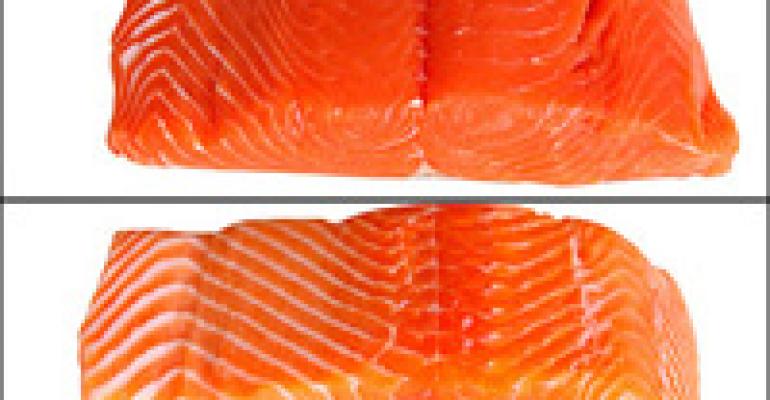
It was one thing when bogus wild salmon turned up in New York City. But now researchers have found farm-raised Atlantic salmon menued as wild caught Pacific salmon at restaurants in Tacoma, WA, home port for a number of actual wild salmon fishermen. What would they find if they looked in your walk-in?
RH has written about seafood switcheroos since as early as 2006 and as recently as this past May. These stories were mainly about grouper, with the substituted fish being cheap farmed imports from Asia.
Restaurant owners get burned twice when this happens. First they pay too much for poor quality fish. Then they wind up with disappointed customers, who also overpay for something they will likely find disappointing.
But even we were surprised to learn what researchers at the University of Washington Tacoma found when they took samples from local restaurants. You’d think the Puget Sound area would be the last bastion of salmon purity, but 38 percent of samples taken from restaurants promoting wild-caught Pacific salmon there were actually farm-raised Atlantic salmon. In other instances, restaurants were menuing good-but-common coho (aka silver) salmon as king salmon, the most prized and most expensive of the five salmon species.
“I’m shocked at the number of substitutions that we encountered,” UW Tacoma assistant professor of biology Erica Cline told the Associated Press. “It’s consumer fraud.”
The study also looked at supermarket salmon, finding that just seven percent of samples taken there had been mislabeled.
Among restaurants, less-expensive sushi operations and teriyaki-style restaurants were the biggest offenders. Researchers, who used DNA testing to analyze samples, found few problems at upscale and fine dining restaurants.
The 2005 New York City investigation was performed on behalf of the New York Times. Reporters there found themselves wondering how wild-caught salmon could be available year-round when quotas, limited-opening fisheries and the natural rhythms of salmon runs made them highly seasonal.
The Times study was restricted to high-end specialty shops, not restaurants. It found that six of the eight fish bought for the investigation and labeled “wild-caught” were in fact farm-raised. Esca chef David Pasternack told the paper “buying authentic wild salmon ‘is like a crapshoot.’” This new study from the University of Washington Tacoma tells restaurants owners it might still be one.
There might be something you can do to ensure you don’t wind up paying wild-caught Pacific salmon prices and misleading your customers by serving them purposely mislabeled farmed Atlantic salmon. It doesn’t apply to Washington state-caught fish, but does give you some protection if you source salmon from the much-larger Alaska fishery. Beginning this summer, the Alaska Seafood Marketing Institute offers a “Chain of Custody” certification program. If your salmon is delivered in a package whose label bears the statement “sourced from a certified Alaska fishery,” you’re getting the real deal. If the package doesn’t have that statement, you might or might not be getting the real deal.
Of course, the UW Tacoma study didn’t address the key issue: who’s behind the menu claim about the bogus wild-caught salmon? If the supplier slips one over on you, shame on him. If you are making the false claim of your own volition, shame on you. Unfortunately, even salmon has become a seafood category where a little bit of due diligence is now required on the restaurant owner’s part.





